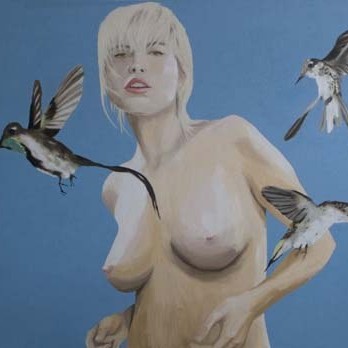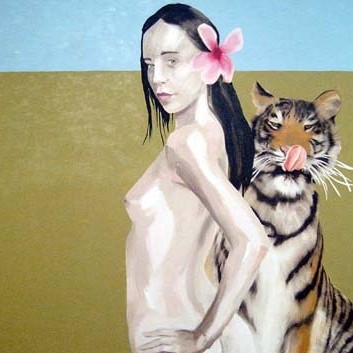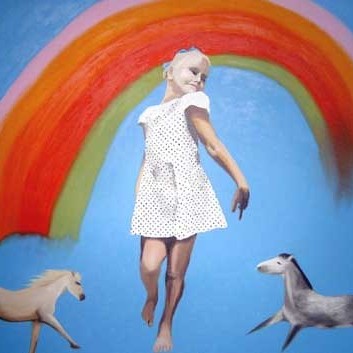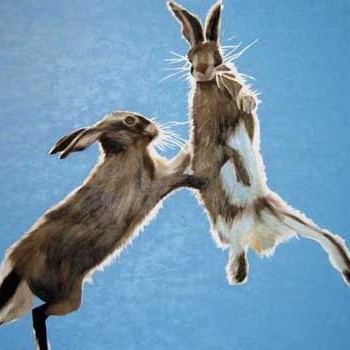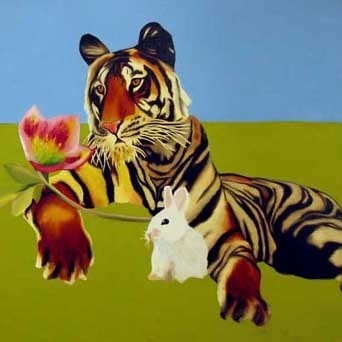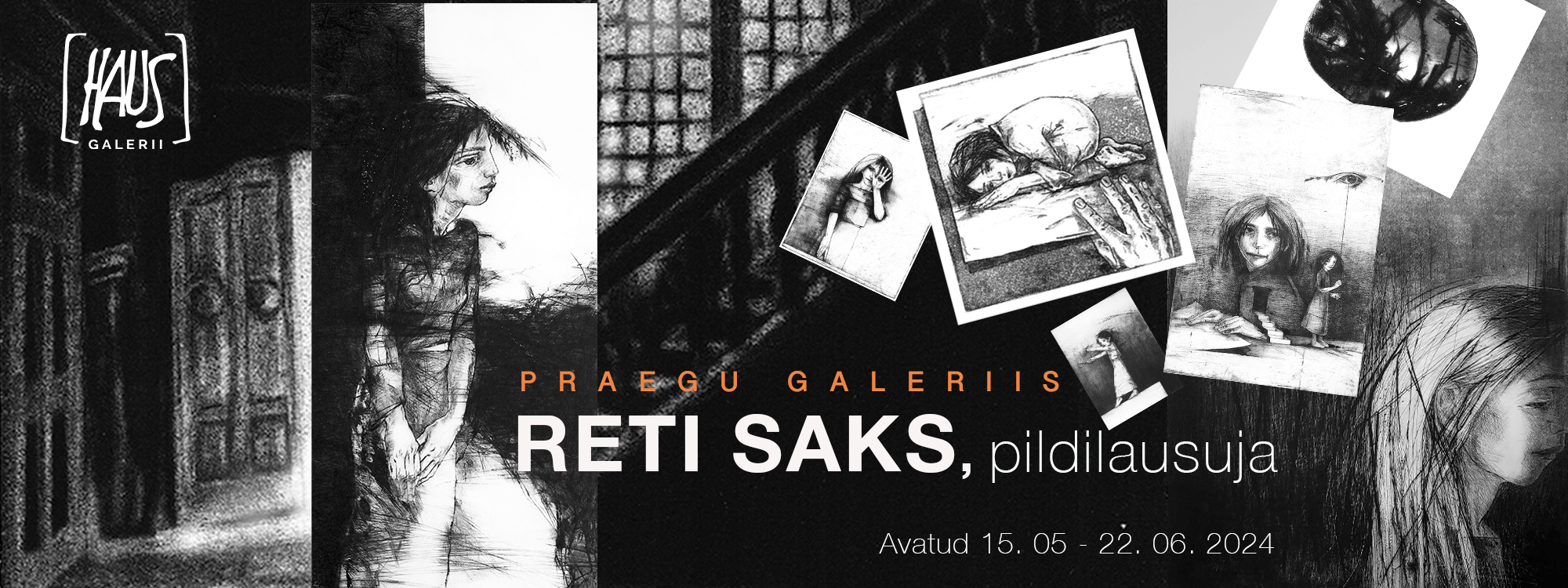Exhibition > Past > Haus Gallery
Haus Gallery 05.07.2005-05.08.2005
1
The sexiest girl, pussycat, the happiest girl and two loverabbits
Merike Estna is one of the most interesting painters of the younger generation, belonging with some of her contemporaries into a group, on the support of which there have emerged talks of another new wave in the Estonian painting. Having graduated from the Estonian Academy of Arts only this spring, Estna has still created great attention with her few personal exhibitions and participation at joint exhibitions.
But what are we exactly talking about, when we are talking of “the new wave of painting” or furthermore: “new missions of painting”? It is easier with the new wave: as soon as there emerges a number of authors, who are using painting as their means of expression, we may talk of the new wave. Alice Kask, Tõnis Saadoja, Maarit Murka are only some of these names. The comparison with the previous generations is maybe not so important anymore, but it surely does strike the eye that “painting” is not for them a romantic or even mythological activity – something, which would form (in the best sense) the everyday routine. They do not see painting possibility in every day and in every situation, they do not seem to consider themselves creators, whose mission it is it paint continuously. One could notice that the work is being executed in finished series, from which is formed one exhibition exposition. (The studios of the newcomers lack piles of sketches, they do not arrive at work every morning with the intention to paint for two hours). They are being economical and laconic, thoughts move rather in series than by separate works, dimensions of the works are as a rule exaggerated, which in its turn means making of extremely important choices. These are not artists, who would paint a painting a day. We hear from them rarely, but this is sufficient.
“New missions” could be the following according to the example by Estna. If traditionally we have got used to the fact that painting must offer a larger life or something, which would be a part of our daily life, then Estna is positioned outside these beforementioned ways of thinking. She is certainly not larger than life in its common sense: here we detect no tacky elevation or poeticizing of everyday phenomena, here can be found no heroic scenes or adorned landscapes, personal anxiety or mythical layers. On the other hand we also cannot detect the reflection of the aspects of everyday life: there can be found no stress of a large city life, socially sore points, symbols of the pop-era, influences of mass media.
Estna’s technique is moving somewhere on the borders of absurd and naivism without still becoming an entertainer. Actually it could happen so that the key to her works is something, which is reciprocal to the way these paintings open up to us. Because while stepping into the basement hall of this gallery, we are greeted by angelic colours, scenes from Paradise, eternal and overwhelming feeling of happiness. From another hand all of this is so much exaggerated and goofy that it cannot convince, it is still vice versa – this is not reality. Because – who could be able to live in Paradise?
